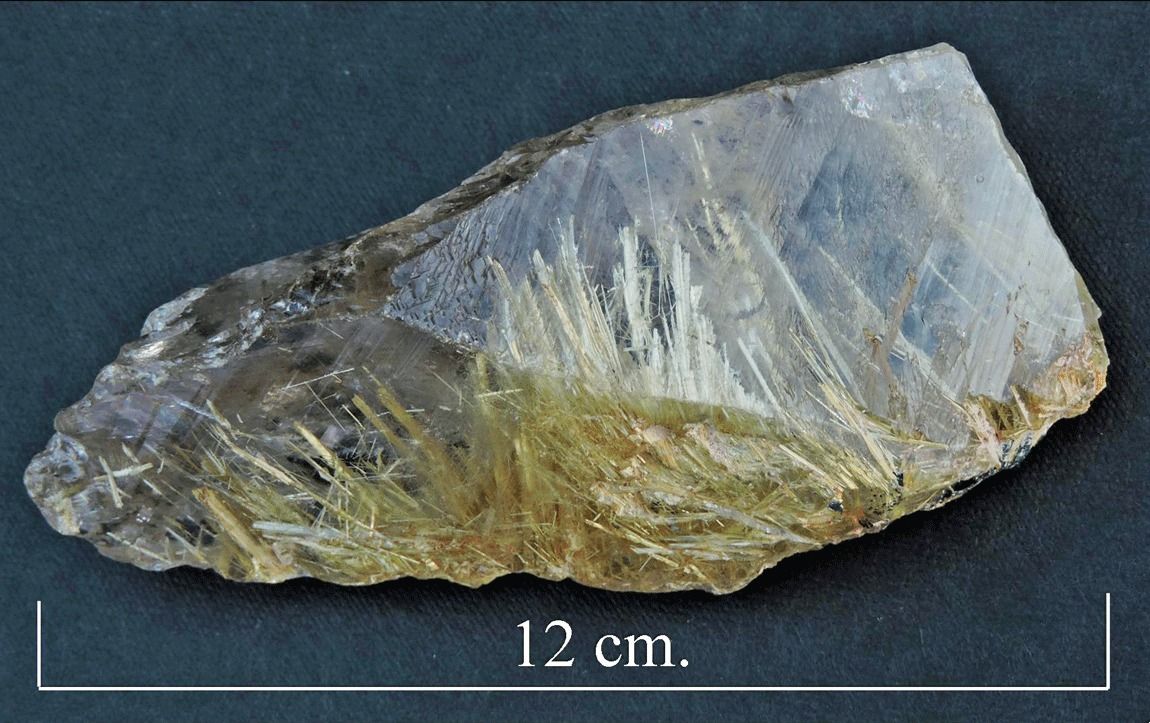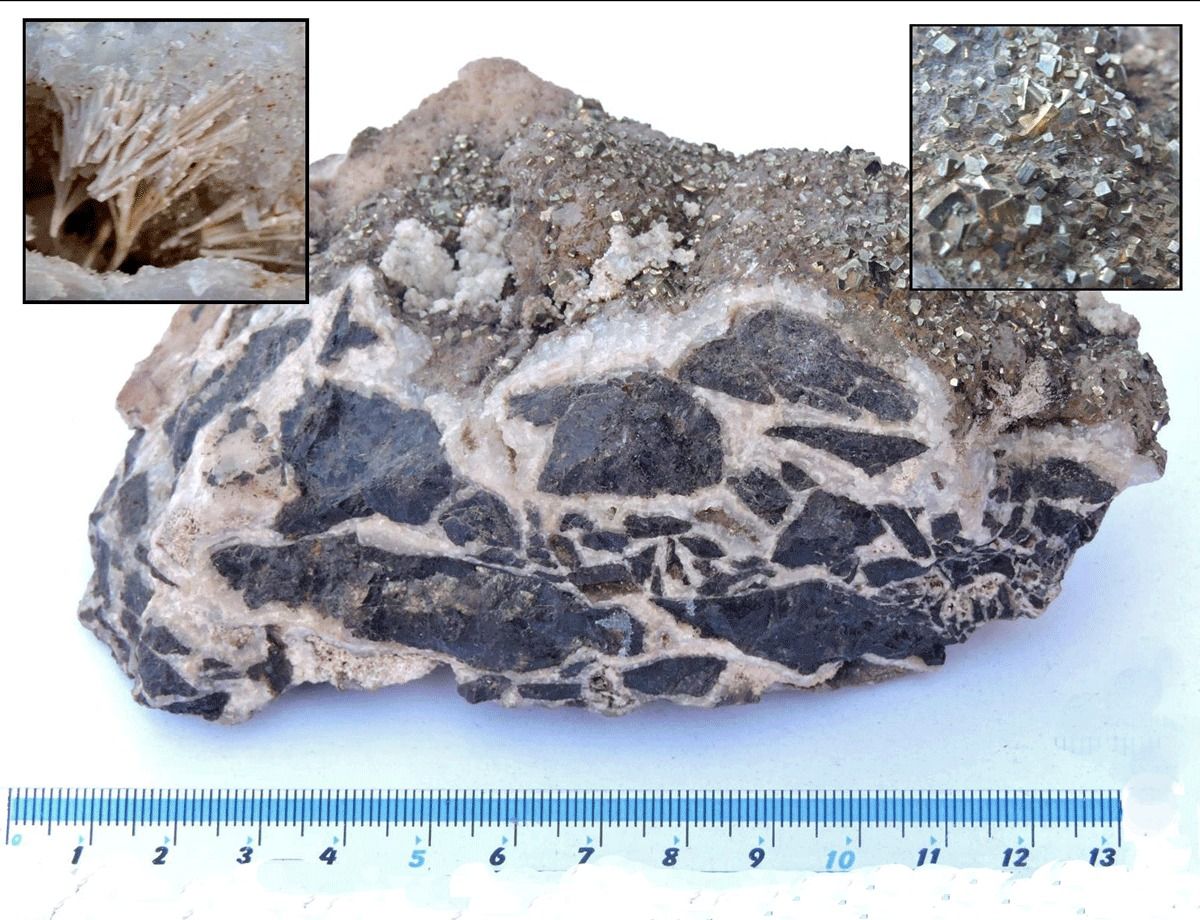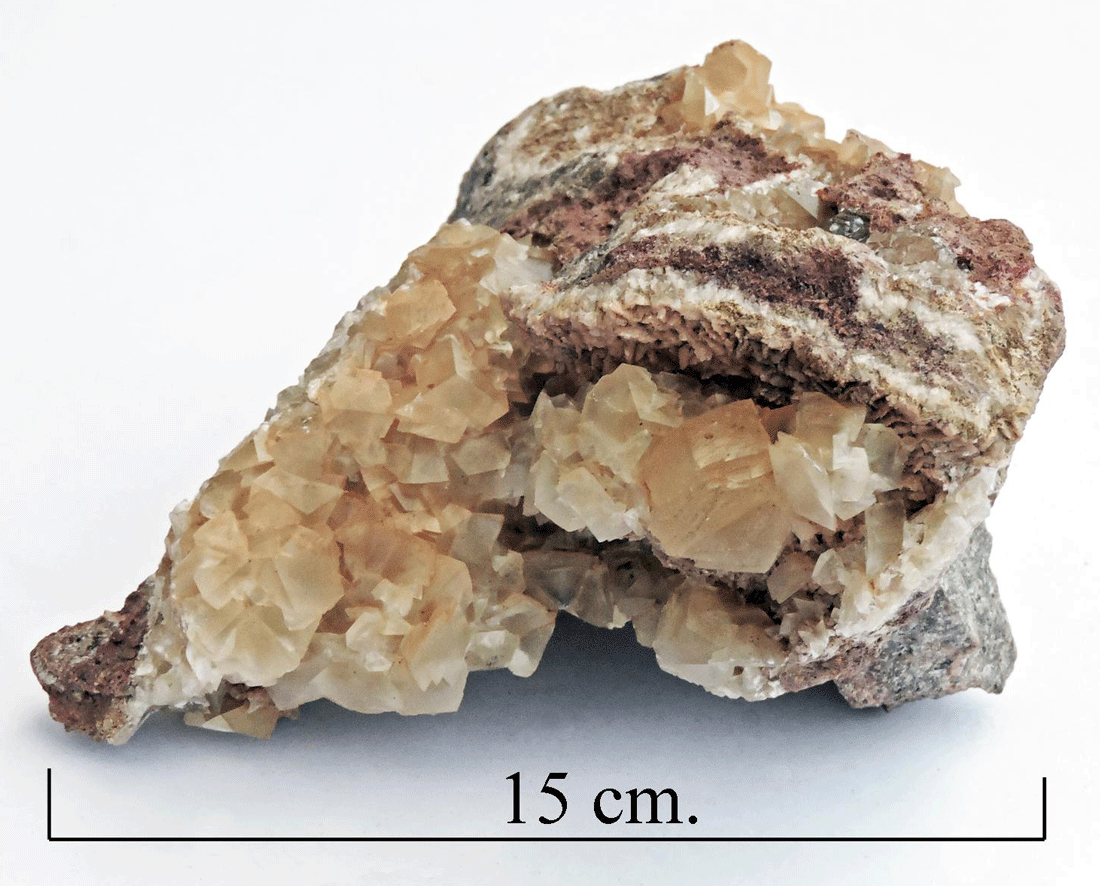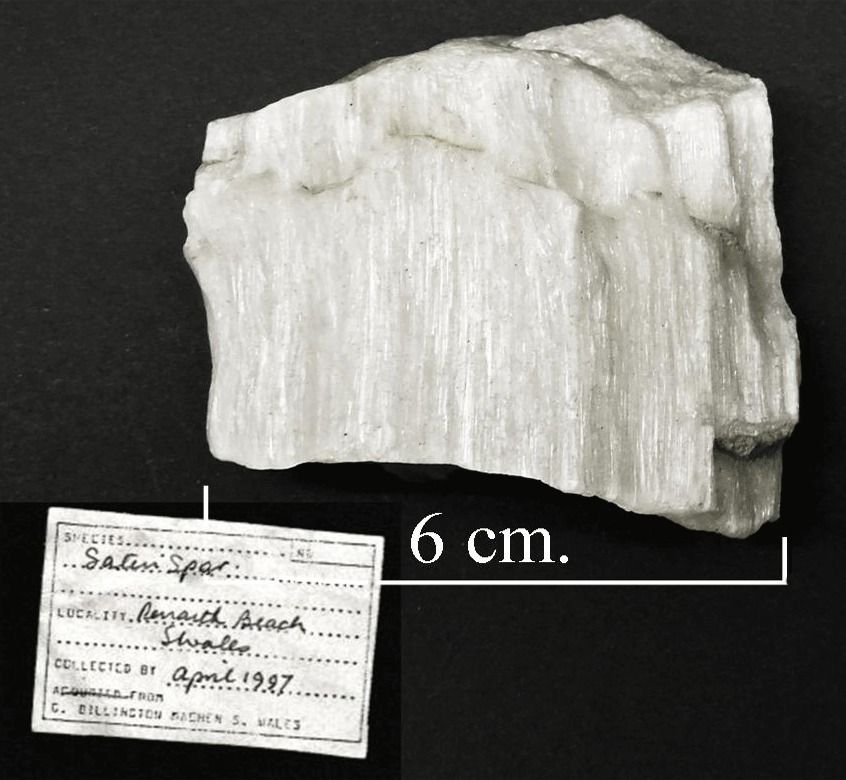Gypsum, satin spar var. Penarth.
Gypsum, CaSO4 . 2H2O Calcium sulphate dihydrate, is an evaporite mineral, which is deposited when salt lakes and playas dry up. This specimen has a fibrous habit, and is commonly referred to as satin spar. It is a very ordinary specimen, but commands a special place in my collection, because it was given to me by Gwyn Billington of the Russell Society many years ago, when I first started collecting minerals. Sadly Gwyn died many years ago, but I vividly remember sitting in his cluttered living room on many occasions. The label describes the location, Penarth beach, South Wales.




